Up Next

The parties implicated in Renault’s protest against the legality of Racing Point’s 2020 Formula 1 car have been summoned to a hearing that was due to begin on Wednesday morning.
For the past three events – the Styrian, Hungarian, and British Grands Prix – Renault has protested the brake ducts on Racing Point’s RP20, alleging they are not the manufacturer’s original design.
All three protests are being viewed as one by a specially assembled panel of stewards on Wednesday.
It is the crescendo of months of speculation and jibes from Racing Point’s midfield rivals about how it was able to replicate the design of last year’s title-winning Mercedes so closely.
Here are the vital details you need to know as we await a verdict that could have wider ramifications for F1.
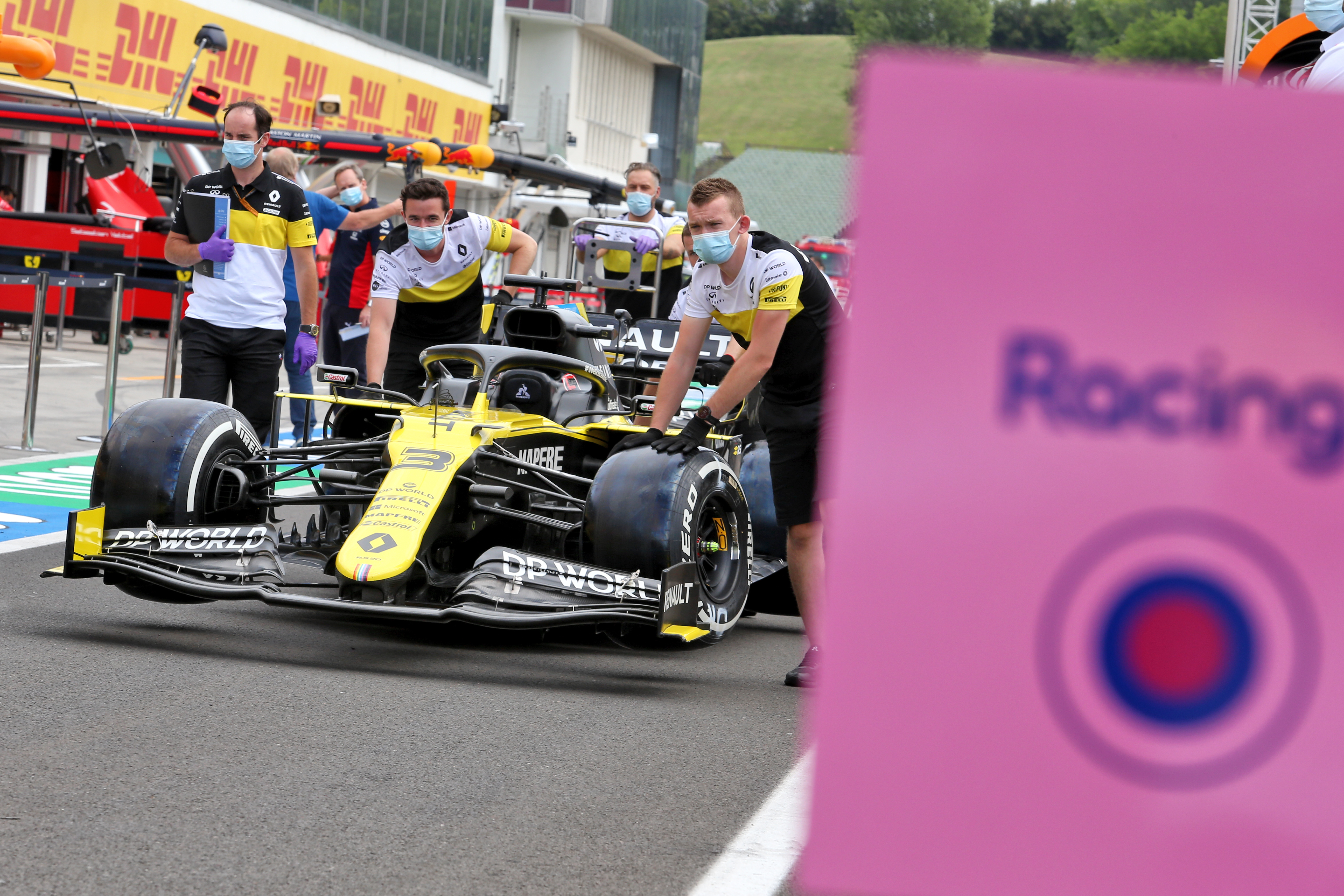
A small 2020 change is key
Renault’s protest against Racing Point’s brake ducts hinges on the stewards’ interpretation of the process a team must follow to prove its designs are its own, even if heavily based on a part used by another team.
Brake ducts were added to the ‘listed parts’ – components a team has designed itself – detailed in Appendix 6 of the F1 sporting regulations for the 2020 season, joining major components such as the survival cell and bodywork.
The change in the regulations means that while it was legal to run brake ducts you did not design in 2019, this is illegal in 2020.
This has created an unusual situation, as although the regulations expressly forbid the exchange of parts or design data for listed parts between competitors, this could have been done legally in 2019.
Racing Point purchased Mercedes 2019 brake ducts last year so could have designed them again from scratch to satisfy the letter of the regulations.
The key will be the process that was followed to achieve that design, even if what Racing Point is running this year is identical.
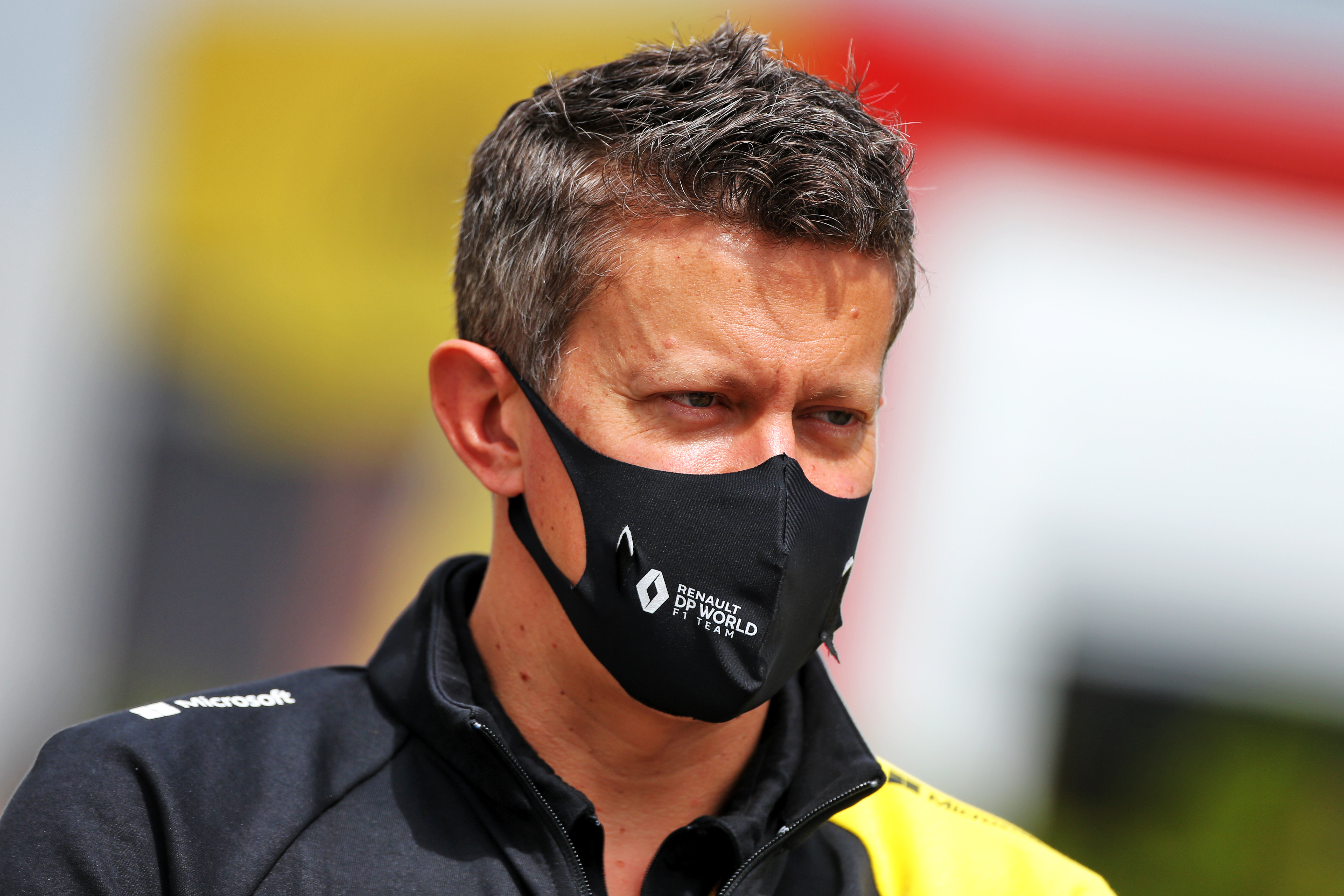
What the two sides will argue
Renault is expected to contend that the above circumstances mean Racing Point has not designed parts itself as required by the regulations.
Executive director Marcin Budkowski has said the importance of the brake ducts to performance, combined with the difficulty of seeing the internals, was key to selecting that part to protest.
“There are surfaces that are visible to the eye and to the cameras of the numerous photographers that go up and down the pitlane,” he said.
“There’s also surfaces that are impossible to see from outside – it would be difficult to copy from pictures.”
But Racing Point has countered that it designed its first version of the 2020 brake ducts based on the data that was acquired legally in 2019.
So although the parts on the final car are visually similar, Racing Point argues that it has gone through a lengthy development process that means they are different.
“The FIA received all the data from our brake ducts in the visit, they did a comparison of the Racing Point brake ducts to the MGP [Mercedes] brake ducts on that day and they commented on it and it was discussed,” said technical director Andrew Green.
“They did comment on how similar they were to the Mercedes and we commented on why they were so similar: because we purchased the brake ducts in 2019.”
Racing Point team boss Otmar Szafnauer believes it is “impossible” for the parts to be ruled illegal.
“The brake ducts take a long time to design and make,” he said. “They’re very, very complicated, we have 886 individual drawings for our brake ducts.”
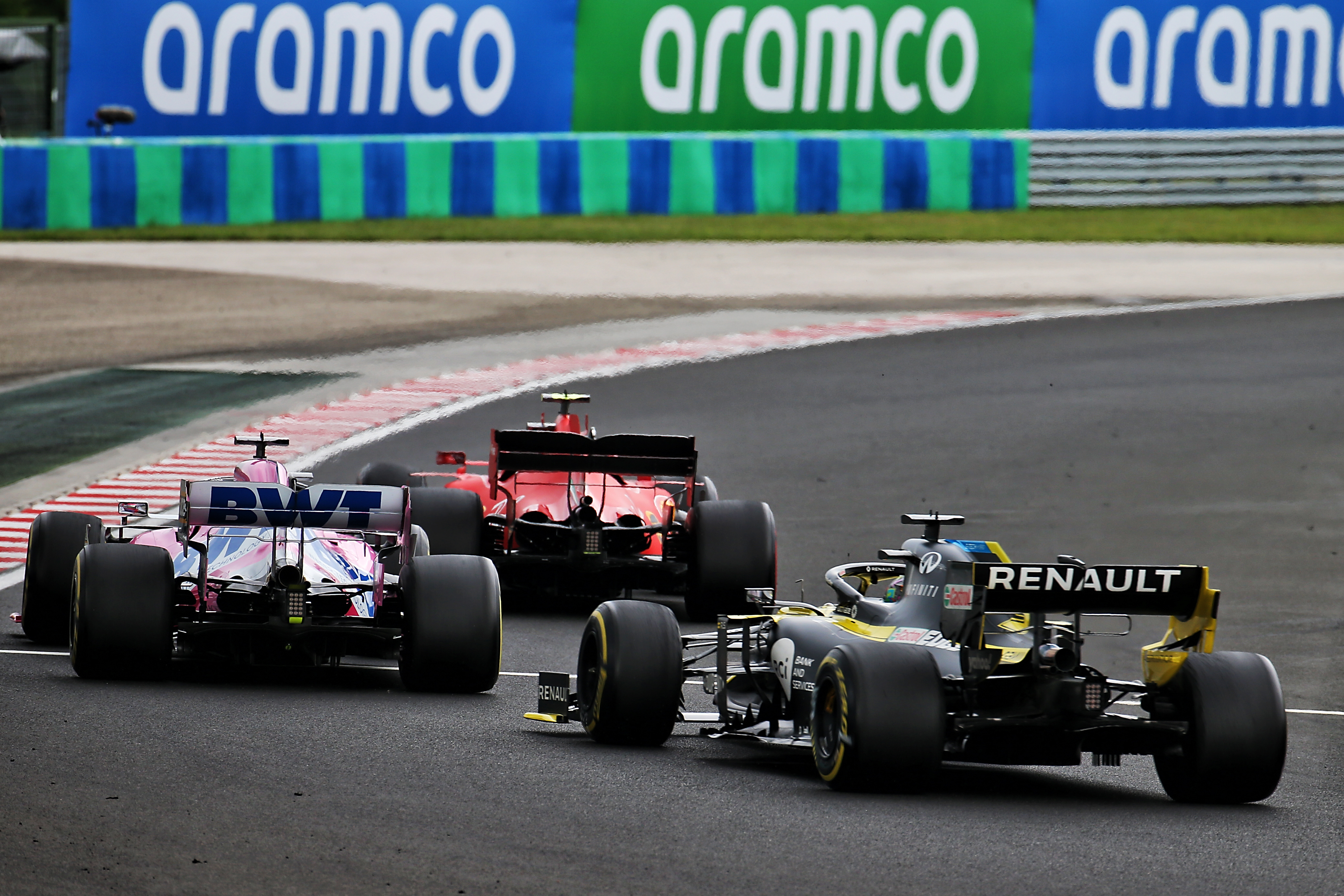
There are more than three results at stake
Renault and others are concerned that the Racing Point model is effectively a customer car by the back door.
Teams like Renault and McLaren are investing considerably to try to bridge the gap to the established big three teams of Mercedes, Red Bull, and Ferrari, but have got stuck at the front of the midfield.
By contrast, Racing Point has found a shortcut to potentially occupying a middle-ground between the leading teams and an intense midfield fight.
Securing a ruling on how relationships work between a team and a customer is in Renault’s interests because a budget cap in 2021 and new 2022 technical rules are a big opportunity to make strides compared to its current rivals.
McLaren has stayed on the sidelines rather than weigh in formally, but it has hurled a few digs in Racing Point’s direction – and commented on how important the verdict is for F1.
Team boss Andreas Seidl said he sees the outcome of this protest as key to deciding whether or not F1 becomes a “copy championship”, and stressed his support of the concept that teams should all be independent constructors.
And the matter has even attracted Ferrari’s intention, with the Maranello team requesting clarification on how the Racing Point methodology of ‘reverse-engineering’ its RP20 from last year’s Mercedes W10 can be considered as ‘design’.
Ferrari has professed itself ‘perplexed’ at the pre-season interpretation of the FIA technical department that, having visited the factory and looked at the process used to create the RP20, it is satisfied Racing Point has met the sporting regulations.
The aggrieved teams believe this is therefore a seminal moment for the FIA and F1 – even if Racing Point has done nothing wrong in this instance, have things gone too far in principle – and should the rules be tightened up?
“Putting aside the legality or not, because we don’t know, I think it’s outside the spirit of what we all think Formula 1 is and has been,” said McLaren Racing CEO Zak Brown.
“Yes there’s always been a degree of copying, look at what that person is doing on the front wing or a double diffuser, and I think that’s part of the sport.
“But it’s certainly been taken to the extreme this time where they’ve effectively admitted they’ve replicated someone else’s racecar. And I don’t believe that’s what Formula 1 is about.
“I think that’s not the DNA of Formula 1 so I think what’s important is in the short term we get clarified whether what’s happened is appropriate or not.”
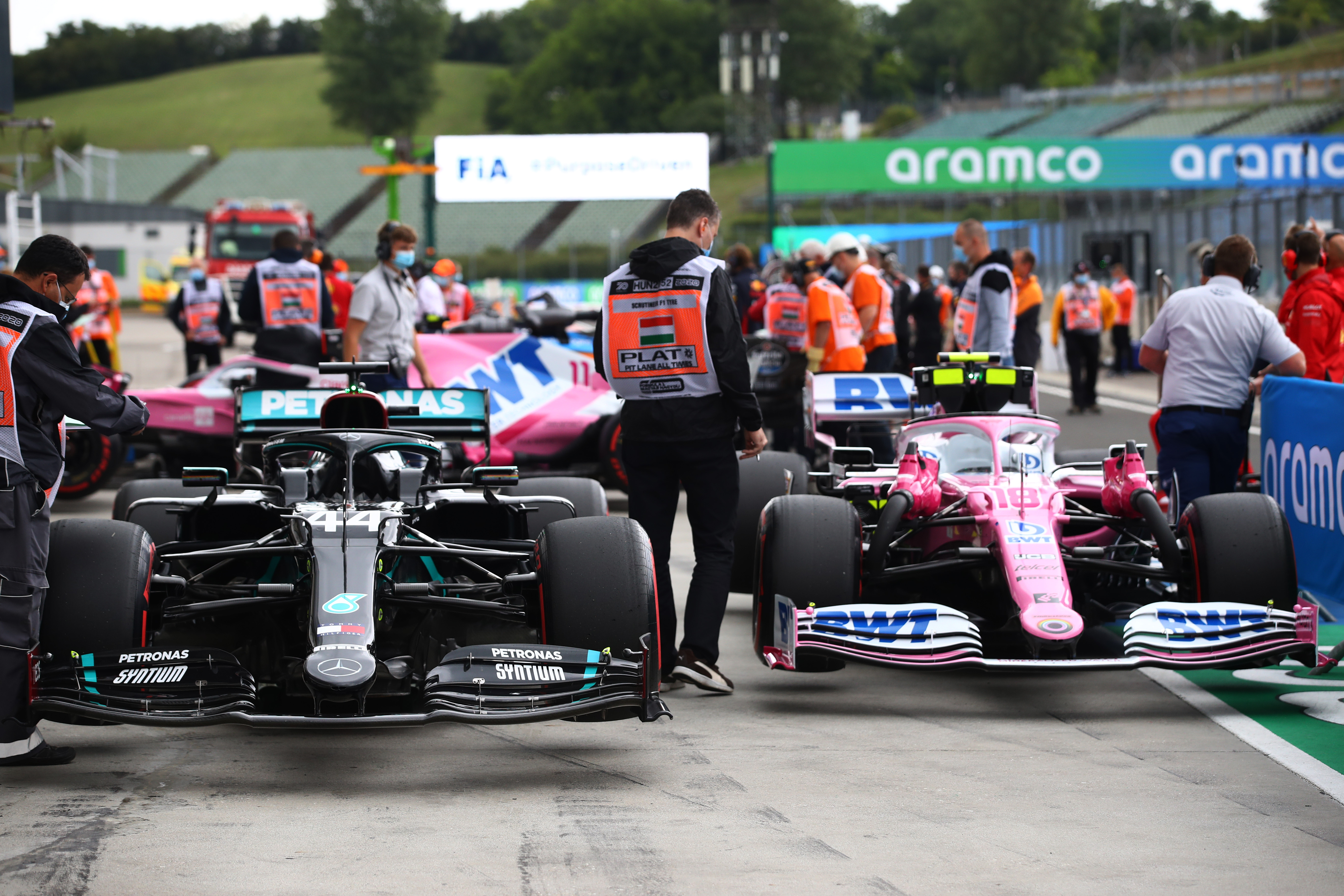
Mercedes seems to be in the clear
Mercedes was ordered to provide the front and rear brake ducts of its W10 for examination, so the stewards could make a comparison to the parts from the RP20.
The championship-winning team’s technical director James Allison says his team was happy to comply with the FIA’s request to provide the components – along with other information – to assist the investigation.
“I think it’s pretty straightforward,” said Allison.
“There’s an argument between Racing Point and Renault and in order to settle that argument the FIA needs to seek some information from us because the dispute is about what brake ducts Racing Point are running.”
There have been suggestions some information exchanged while Racing Point was could legally use Mercedes’ brake ducts in 2019 might have been used improperly to influence the 2020 Racing Point design.
But the FIA has indicated Mercedes is not properly implicated because there is no indication it supplied information relating to components in 2020.
This is consistent with Green saying Racing Point bought the brake ducts last year. So unless Renault alleges that Mercedes supplied further information or components illegally, Mercedes should not be at risk of punishment.
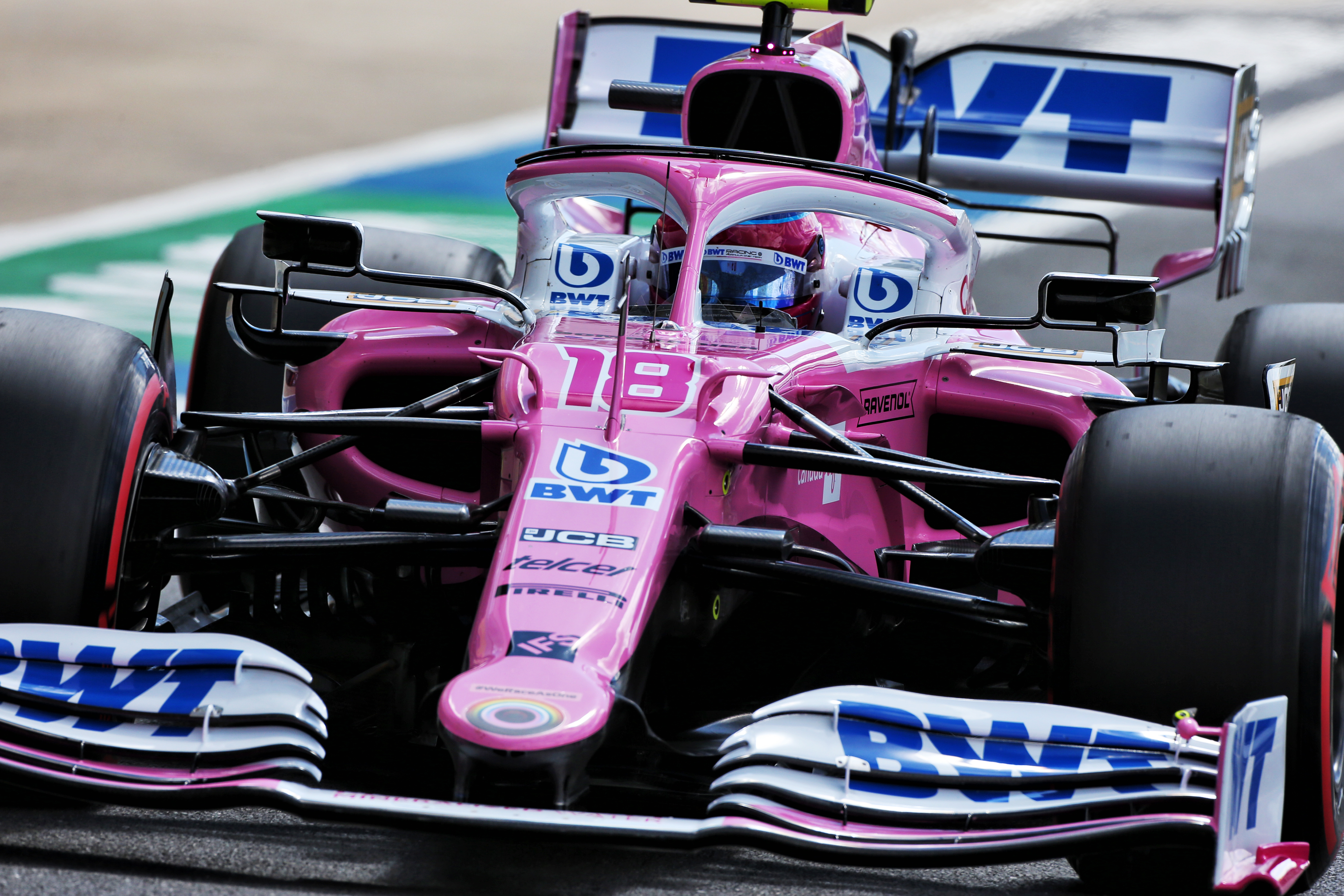
It won’t end here
The losing party is almost certain to appeal the stewards’ verdict either way, and there could even be an appeal from the winning side if they feel that the outcome does not go far enough.
Racing Point is adamant it has a concrete defence and has been cagey to engage in hypotheticals but has indicated it will appeal a ruling in Renault’s favour.
It would also cause a problem because Racing Point would presumably not be allowed to continue with its brake ducts if they are ruled illegal.
Renault has also suggested it would appeal if its protest is thrown out.
Either side would have four days to appeal, with the FIA’s hope that any extension of this process will not last beyond the week after the scheduled Spanish Grand Prix, commencing Monday August 17.
Though the FIA’s timeline is set, the issue could take on a life of its own if either side feels it is necessary to pursue the matter outside of the FIA’s channels, in a court of law.








